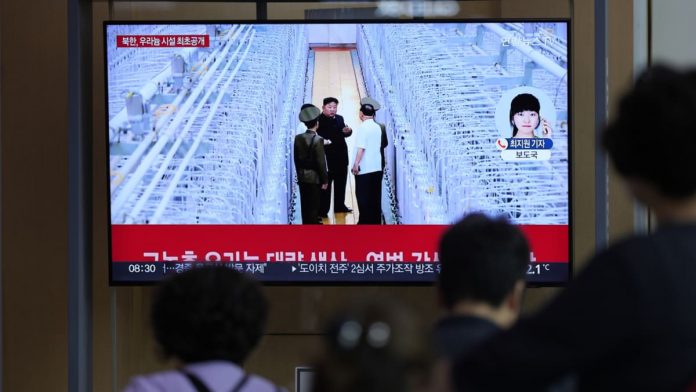Kim in recent months has repeatedly called for an “exponential” expansion of his country’s nuclear arsenal to counter what he perceives as external US-led threats. The photos released on Friday were likely intended to demonstrate that the country has the bomb fuel capacity to match the ambitions of its leader, experts say.
Kim has since 2022 been accelerating the expansion of his nuclear-capable missile systems, which include weapons designed to strike both the US mainland and American allies in Asia.
North Korea’s progress in its uranium enrichment programme is a major concern for rivals and neighbours. Highly enriched uranium is easier than plutonium to engineer into a weapon. And while plutonium facilities are large and produce detectable radiation, making them easier for satellites to detect, uranium centrifuges can be operated almost anywhere, including small factories, caves, underground tunnels or other hard-to-reach places.
Yang said it’s estimated that North Korea could be operating around 10,000 uranium centrifuges across multiple sites, which account for the core of the country’s nuclear programme that likely produces enough fuel to make around 12 to 18 bombs a year. By 2027, North Korea would possibly amass enough fuel to produce about 200 bombs, he said.
In a report this week, Rafael Grossi, director general of the International Atomic Energy Agency, said his agency has monitored continued activities at both Yongbyon and Kangson facilities.
Grossi said that at Yongbyon, IAEA had observed water outflows from the cooling water system of the light-water reactor and other indications consistent with the operation of 5-megawatt reactor and the reported centrifuge enrichment facility. The light-water reactor could be an additional source of weapons-grade plutonium along with the widely known 5-megawatt reactor, observers say.
He said that in 2024, a new annex to the main building in the Kangson complex was built, expanding the available floorspace.

